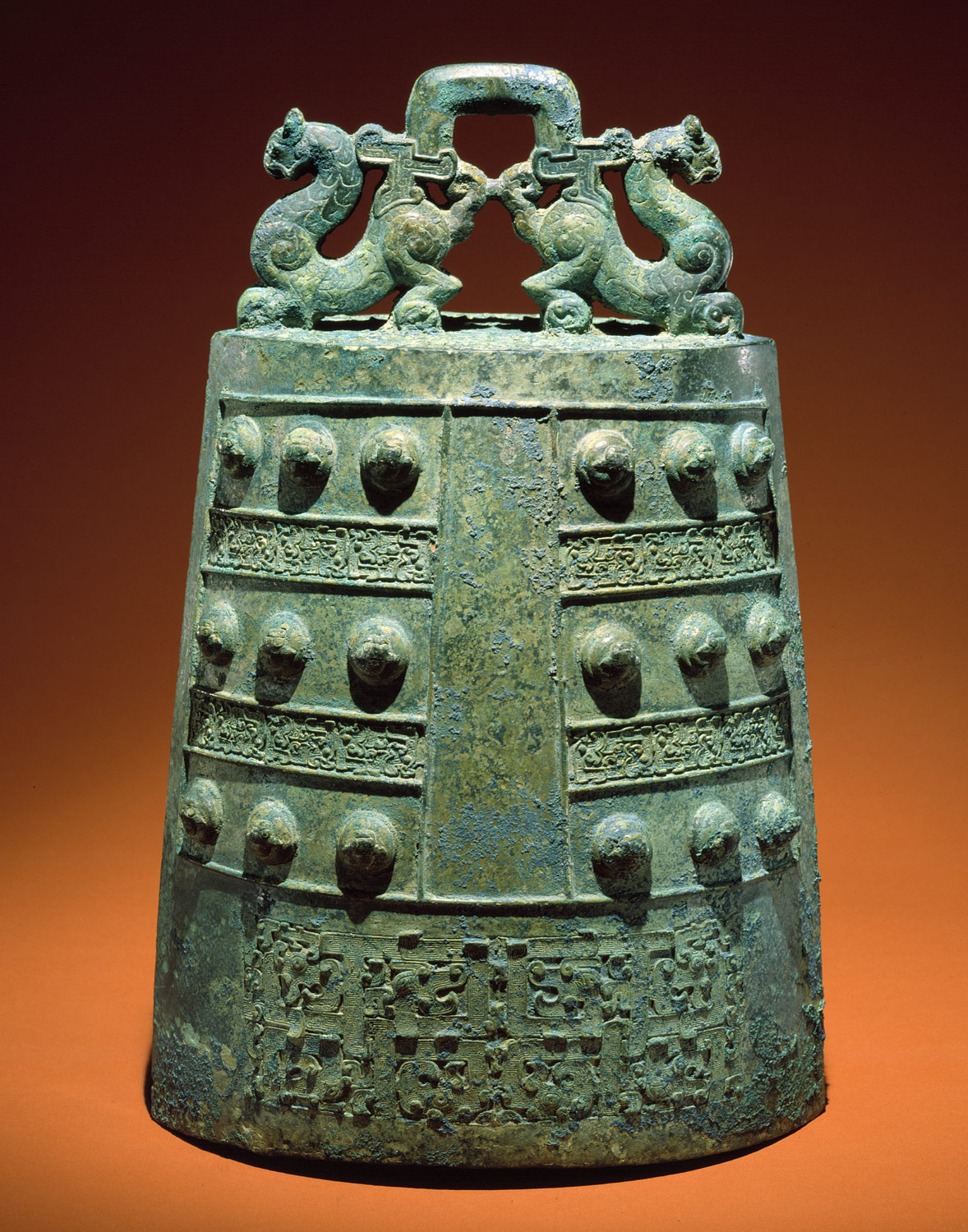Bronze Ware Inscriptions in the Eastern Zhou Dynasty
4 min readDuring the Spring and Autumn Period and the Warring States Period,Chinese calligraphy developed in diverse directions.Calligraphic relics consist of written characters,such as bamboo documents,alignment agreements,wooden figures,painted carpentry and textiles,and inscriptions on bronze ware,stone drums and seals.

As the imperial Zhou court rule declined,characters of other countries that were quite different from the ones of the Zhou Dynasty gained prominence.Two dominant systems came into existence during the Warring States Period.One was the western character system with the Qin Kingdom as a representative,and the other was the oriental character system with the six kingdoms to the east of Shanhaiguan Gate as their representatives.This oriental character system is called”ancient characters”by later generations.Qi and Lu Kingdoms and Chu,Xu,Wu and Yue Kingdoms in the southern part had typical characters.
Spring and Autumn Period.Caihou Chan Sword inscription Unearthed from Huainan city,Anhui Province.The sword has an inscription of six Chinese characters in two lines.It is in the Anhui Museum.
Stone-drum inscriptions
It is the earliest existing stone inscription in China.It was discovered in Tianxing(Fengxiang),Shaanxi province.
in the early Tang Dynasty(618-907).There were 10 stone drums in total and each of them was engraved with a poem recording touring and hunting.These inscriptions were called stone-drum inscriptions.There were different opinions on the origin of the stone-drum inscriptions before Ma Heng’s Verification on Whether the Stone-drum Was Works of the Qin Dynasty in 1931.Since then the stone-drums were recognized as works of the Qin Dynasty(221-206BC).Being more than 2000 years old,the stone drums had cracks on the surface.Therefore the early copies were very valuable.
Bronze ware inscriptions of the Eastern Zhou Dynasty had two artistic tendencies.One carried the rules from the Western Zhou Dynasty and paid much more attention to stroke and structure.Some inscribed characters were prudent,and others disregarded restrictions.Some special inscriptions were made with models,such as the inscription on the Qingong Gui of Qin Kingdom.

Warring States Period.Inscription of the Ding of Zhongshan’s King Guo(part)Excavated from the tombs of the King of the Zhongshan Kingdom,Pingshan county,Hebei Province in 1978.Kept in the Hebei Cultural Relics Administration.It has an inscription of 469 Chinese characters in 77 lines,all carved on the outer surface of the vessel.
Another trend of inscriptions was an emphasis on decoration.Characters on bronze ware inscriptions unearthed from the Caihou tomb extended vertically,the strokes were rigid linear lines and arcs,and the structure seemed like patterns.This style can be obviously found in the bronze ware inscriptions unearthed from the Zenghouyi tomb.Only carving traces between the strokes can be seen,while the enthusiasm of writing and passion disappear.Bronze ware inscriptions of the Chu Kingdom have different styles.Some are free and unlimited,such as the characters on the Gui of the Chu’s King Yanken.Some inscriptions intentionally pursue changes and novelty and modify strokes into decorative patterns.On the inscription of the Pan of the Chu’s King Yanken,the beginning strokes are thin,transitional points are fat,and the ending strokes are in water drop shape.This calligraphic style is called”tadpole font”by later generations.In the Chu,Wu and Yue kingdoms,a bird font style was popular.Character structure and some strokes looked similar to bird shapes.Among the large amounts of bronze ware unearthed from No.1 tomb of the Zhongshan Kingdom during the Warring States Period in Pingshan County,Hebei Province,90 pieces have inscriptions.The inscription ofthe Kettle of the Zhongshan’s King Cuo has 448 characters,and 469 on the Ding of the Zhongshan’s King Cuo.
The inscriptions are detailed records of the lineage and big events of the Zhongshan Kingdom.The font is thin and tall,and beginning and ending strokes have sharp edges.The bird font features can be seen in some parts of font structure.
These inscriptions show that people in the Eastern Zhou Dynasty,in particular during the Warring States Period,intentionally pursued decorative aesthetics in calligraphy.However,this font style lacks writers’passion due to excessive emphasis on novelty.Therefore,the font style is mostly ignored in calligraphic history.
Western Han. Bronze Kettle with Bird Zhuan 44.2cm high. Unearthed from the tomb of the King Jingwang of the Zhongshan Kingdom, Mancheng, Hebei Province. Kept in the Archeology Research Institute of the Chinese Academy of Social Sciences.A beautiful bird Zhuan inscription and animal patterm belt were inlaid with gold and silver wire on the body of the kettle.









